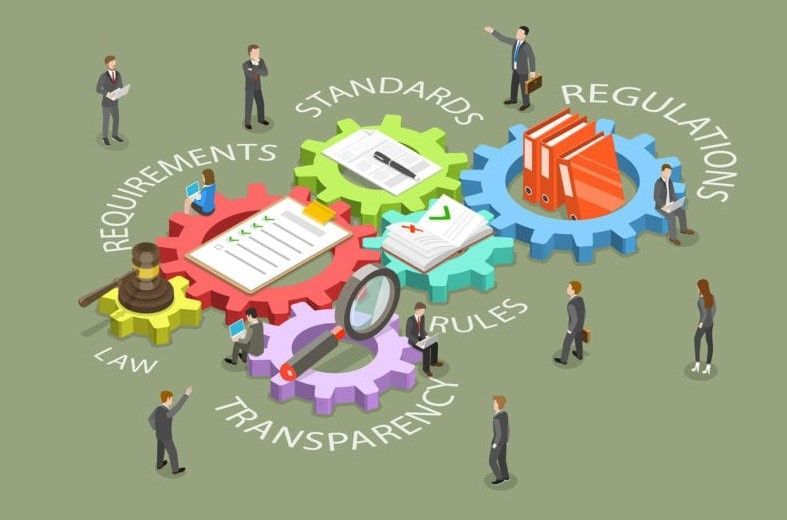What Are the New Rules of Selling and Business Development?
August 14, 2025
Like the new rules of hand washing, the new rules of business development aren’t really so different from the old ones—they just need to be applied differently. The good news is that not everything has changed. Here is some guidance on how to know which is which and what’s what.
As restrictions on businesses are loosened or lifted, a new reality is changing the nature of business-to-business selling and marketing. There will be fewer people working in offices, there will be fewer face to face meetings, and buyers will have done more research before their first conversations with business developers. The question is how and what can you do about it?
How effectively can you sell without meeting face to face? What do you need to know about using virtual platforms? Will your research, presentations, and support materials need to be revamped?
We were recently asked to share our insights through a virtual presentation to members of the Valley Industrial Association. The association offers its 200 manufacturing company members strategic resources, relevant educational programs, and networking opportunities. Here, in large part, is what we said.
To increase the topline in this new environment, efficiency will be paramount. That means alignment between sales and marketing must be strong. Your sales process must communicate expertise and build trust even more effectively. Developing relationships matters more than ever. Personality, though still important, will matter less, and process will matter more.
How can your company begin to develop and implement critical tools and approaches—and adjust as the new sales and marketing environment evolves and new rules apply?
The 7 Questions to Ask about Business Development
The first step to moving forward is to ask key questions about your company’s business development goals and the processes you’re using to achieve them. Even if you’ve already been forced into taking action on the fly, revisit your answers now and from time to time in the future. Monitoring and recognizing changing circumstances and adapting quickly will shape your success.
- What are we already doing that we need to do differently or better?
- What new tools should we add to the mix to stay ahead of our competitors?
- How can we both retain our customers and develop new ones?
- How can we deliver value during the sales process —that is, before our products or services are sold and delivered?
- How can we better leverage the lesser amount of time we’ll have with prospects and customers?
- How can we establish trust and be seen as experts when we cannot meet in person?
- Are there practices and processes that we can revamp or get rid of? Are there new ones we can create?
As a baseline, think about the nature of the current environment and what the implications are not only for your company industry but also for your customers and prospects. To do that, first ask the seven questions about your company. Then put yourself in the shoes of your customers and suppliers and ask them again.
As you do that, take stock of the current environment. Here are a few basics. Add others you know about and update them during the rest of the year. (Send us your discoveries and we may use them with appropriate attribution in this column!)
- More people working from home means fewer people to call on face to face.
- Fewer phone numbers and e-mails are readily at hand.
- Meetings with buyers in person are riskier and more difficult to arrange.
- Virtual platforms are becoming the norm, and they require new operating and communications skills to be effective.
- Review the purpose of your communications, especially your website.
- Even the little things will matter more. When you do present or meet face to face, you’ll need to find out what health and safety protocols prospects and customers have in place.
To move forward, here are three key activities, two of which business developers will need to double down on to build their skills and one in which they will need to build new ones. Fortunately, the fundamentals of selling still apply.
- Build personal business relationships. Fewer face-to-face meetings means that at least some of the tried-and-true ways to develop relationships and trust will be diminished, possibly eliminated. But individual connections remain critical. Now, they will depend more on a fair exchange of business value earlier than on getting to know people through shared interests over time. Our consultative sales training course FOCIS® does this while creating a customized sales process (not a canned pitch, which is still the standard, but ineffective, approach). Good news for many is that getting to know people on the golf course or tennis court will still contribute as reinforcement. And, of course, effective prospecting will be even more important.
- Rely on Processes, not Personalities. A personality that makes prospects comfortable will always be valuable. But top producers don’t rely on personality to initiate, build, and sustain relationships. Those are the 20 percent of salespeople in any business or service organization that bring in 80 percent of the business. Not being face to face as often won’t affect top producers as much because their processes will still be effective. The urgency of the challenges we face now are opportunities—and motivators—to enable all of your business developers increase their productivity. Here’s the key way that the 20 percent perform as much as 15 times better than the 80 percent. They put our definition of consultative selling to work: Consultative selling is delivering value during the sales process.
- Learn to Sell Virtually.
By this we don’t mean virtual marketing that uses a website or digital promotions to educate
prospects and markets. We mean applying consultative selling
skills and sales processes
virtually to persuade
prospects and customers to trust you and then buy from you.
At the moment, learning by doing on the technology side is how most of us are getting by. But it’s time to make learning the sales skills and the technology more intentional and to organize it. Start by becoming familiar with the available software, especially new entries. At least one product, for instance, promotes virtual networking by allowing participants to move from “table to table” during remote interactions ( remo.co ). Establish training and instruction processes and protocols just as you would for any manufacturing or service function.
We can help develop the necessary consultative selling skills and customized sales processes—and then codify them—for virtual use.
Since finding prospects to connect with is even more important today, let’s focus for a moment on keys to better prospecting. Here is a reminder of seven actions that have always worked and that, with additional effort and imagination, will work now, especially if you actively apply them.
- Dedicate a set amount of time each day (or at least three times a week) to calling prospects on the phone. Is that too “been there done that” for you? Maybe so, but it works. Do your best to get over it. E-mails can be effective, but since personal contact is already diminishing, the value of actual voice-to-voice contact is increasing—a lot. Nurture marketing can support calling.
- Use different databases: That means old prospects, existing accounts, inactive accounts, lost prospects, and warm leads. Leverage your LinkedIn network by reaching out with value-driven messages. You’ll reach many more people with just one post—and they’ll be interested in what you have to say just because they’re following a related thread.
- Bring value to every interaction. This is how relationships and trust are built most effectively because prospects don’t just get a “Here’s who we are and here’s what we do” promotional message. They also see that their time with you is productive—they learn something and they begin to think of you when they face any business problem, not just those that you and your product or service can solve.
- Initiating conversations. To get started, ask questions that help prospects to think productively about their businesses. For instance, tried and true does work here: “What are one or two things that keep you from achieving your topline goals?” Scripts don’t work nearly so well as dialogues.
- Do more research before calling. That information gives you what you need to plan more effectively before you make the call. Not only will a prospect’s website tell you about the company, but it will also provide insight into how they talk about and think about their products. You can use that language to connect.
- Use productive discovery techniques. This skill is not usually “natural.” It takes thought and training, but it pays off in using your time—and your prospect’s—more efficiently. And that’s paramount on phone calls. What you learn on a phone call can be used to build a relationship by showing you care more about your prospect’s business challenges than you do about your selling opportunities.
- And use them sooner.
Prepare to move into discovery more quickly than you might normally. Here are some ideas about how to do that.
Ask questions you usually reserve for a second, or even third, meeting. Make the call prospect-centric instead of seller-centric. To pique curiosity, your messaging needs to be about your prospects, not you. Pose a question about a problem that you know they’re having, or have had, based on your experience. It needs to be a problem that you can solve. This approach is different from asking what challenges they’re facing, which we suggested earlier. By being specific, you begin to build trust based on your expertise and knowledge.
Consider outsourcing a portion of your lead generation. If your salespeople are not good at it, they may be wasting a lot of time. After all, we’ve found that more than 90 percent of salespeople don’t like cold calling. We have programs to support customized calling and lead generation.
As always please call or e-mail us with your questions and concerns at 847-446-0008 or pkrone@productivestrategies.com. To learn about a few ways to provide value before the sale, ask us for The Top 5 Ways to Create Value during the Sales Call.
The post What Are the New Rules of Selling and Business Development? appeared first on Productive Strategies, Inc..










